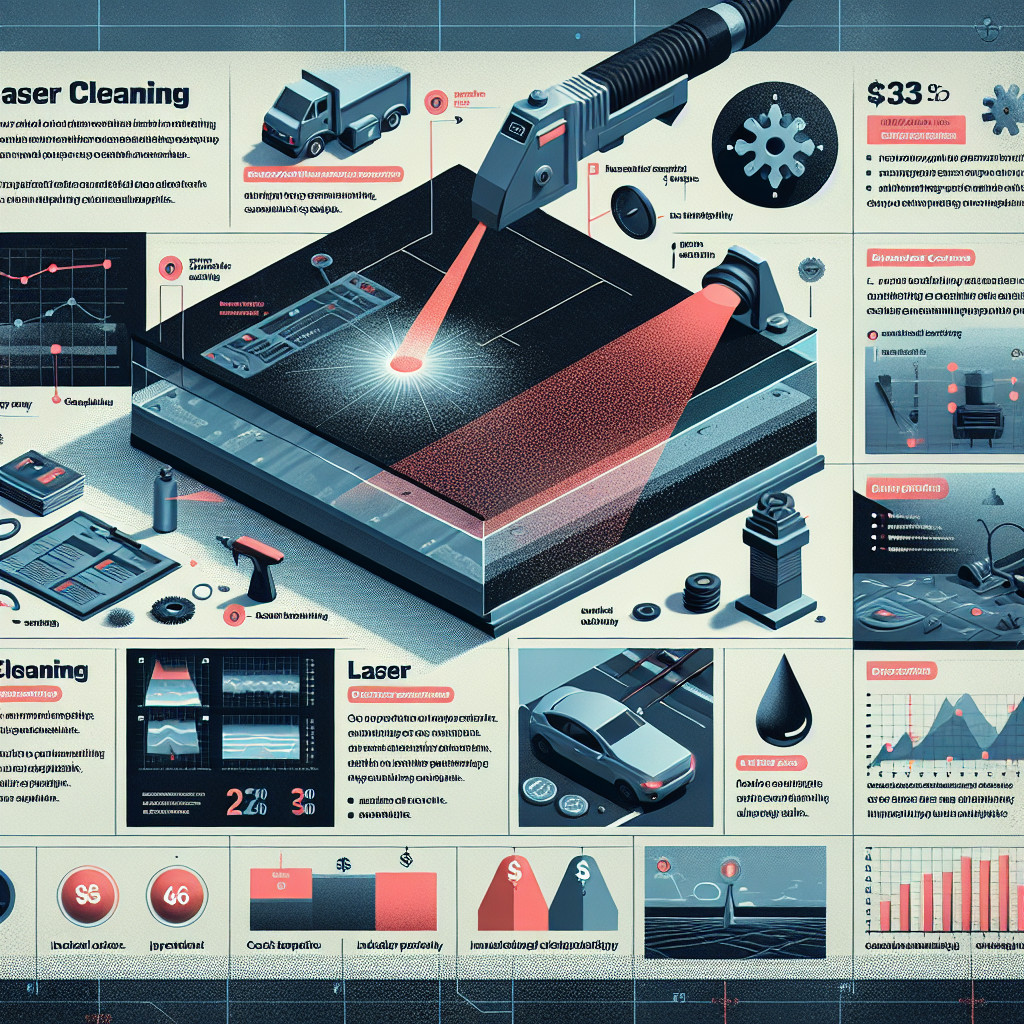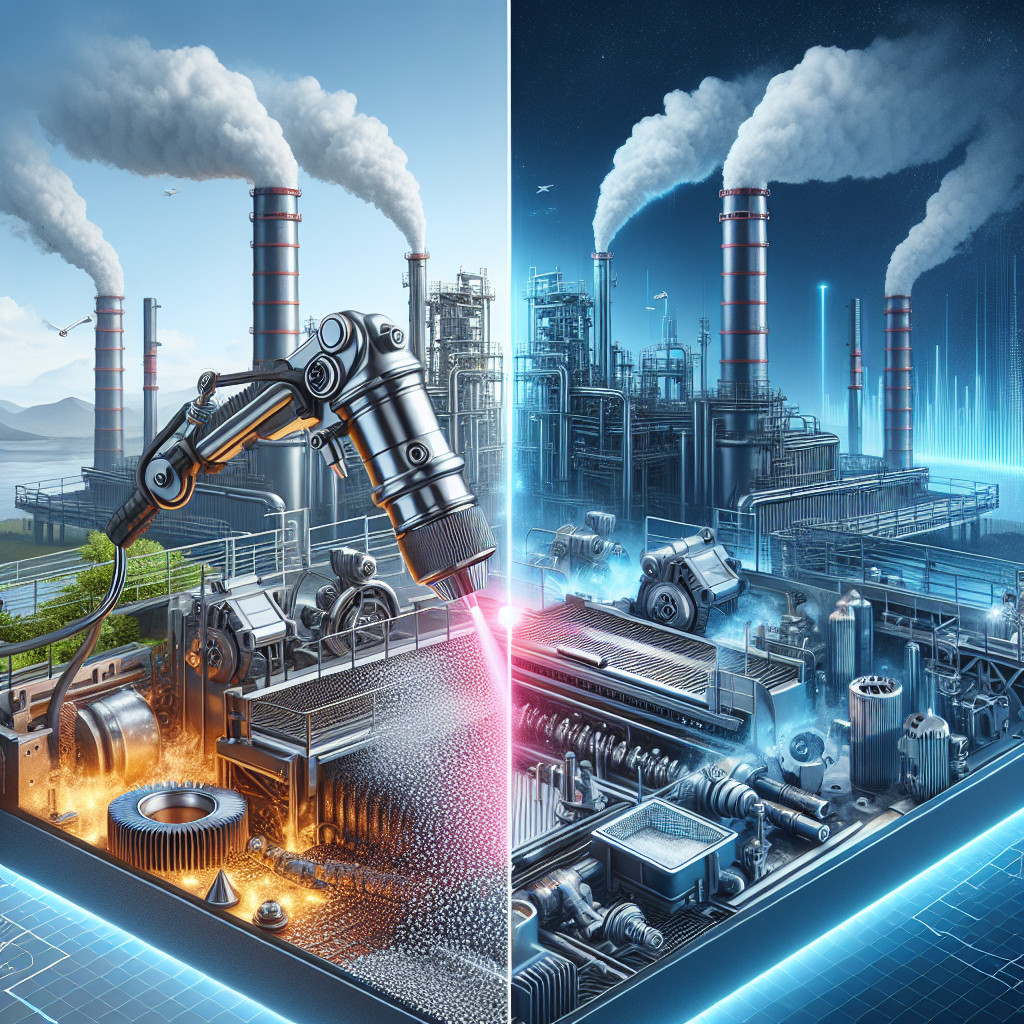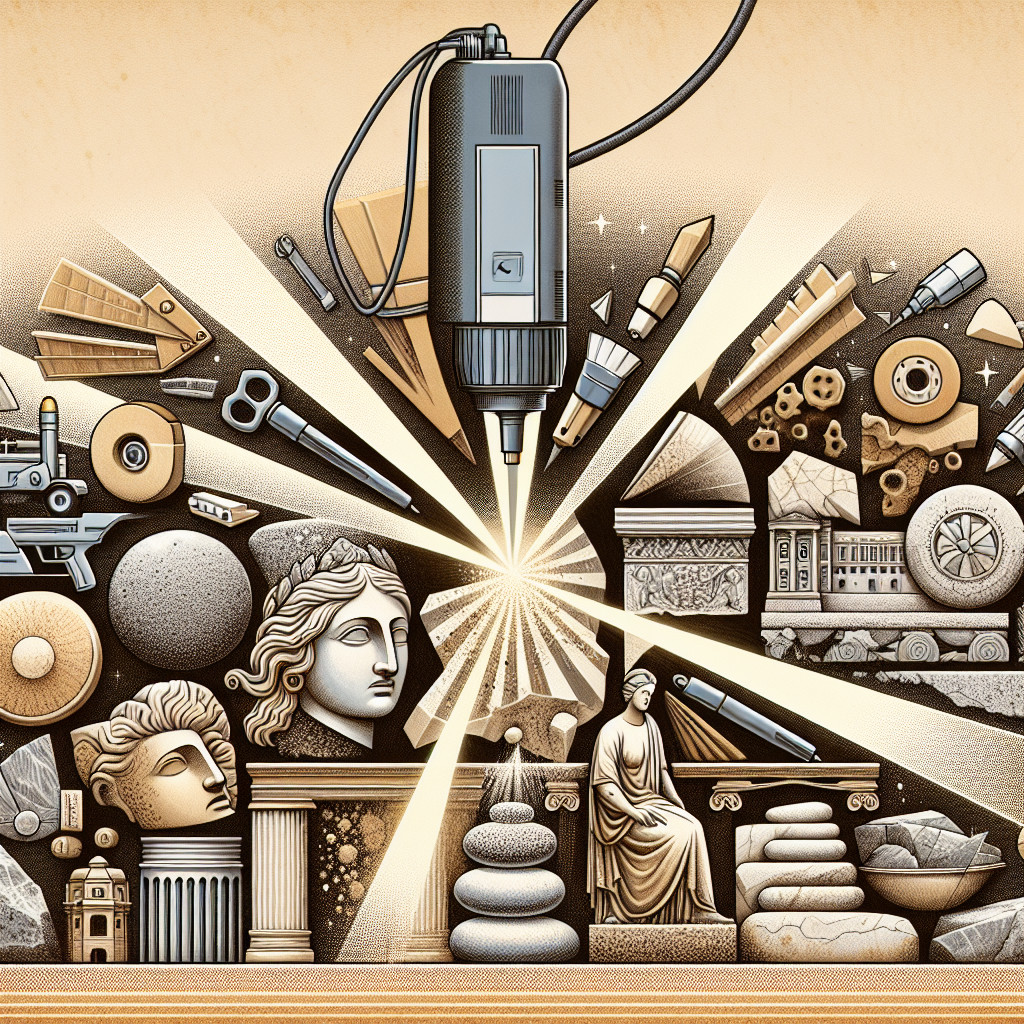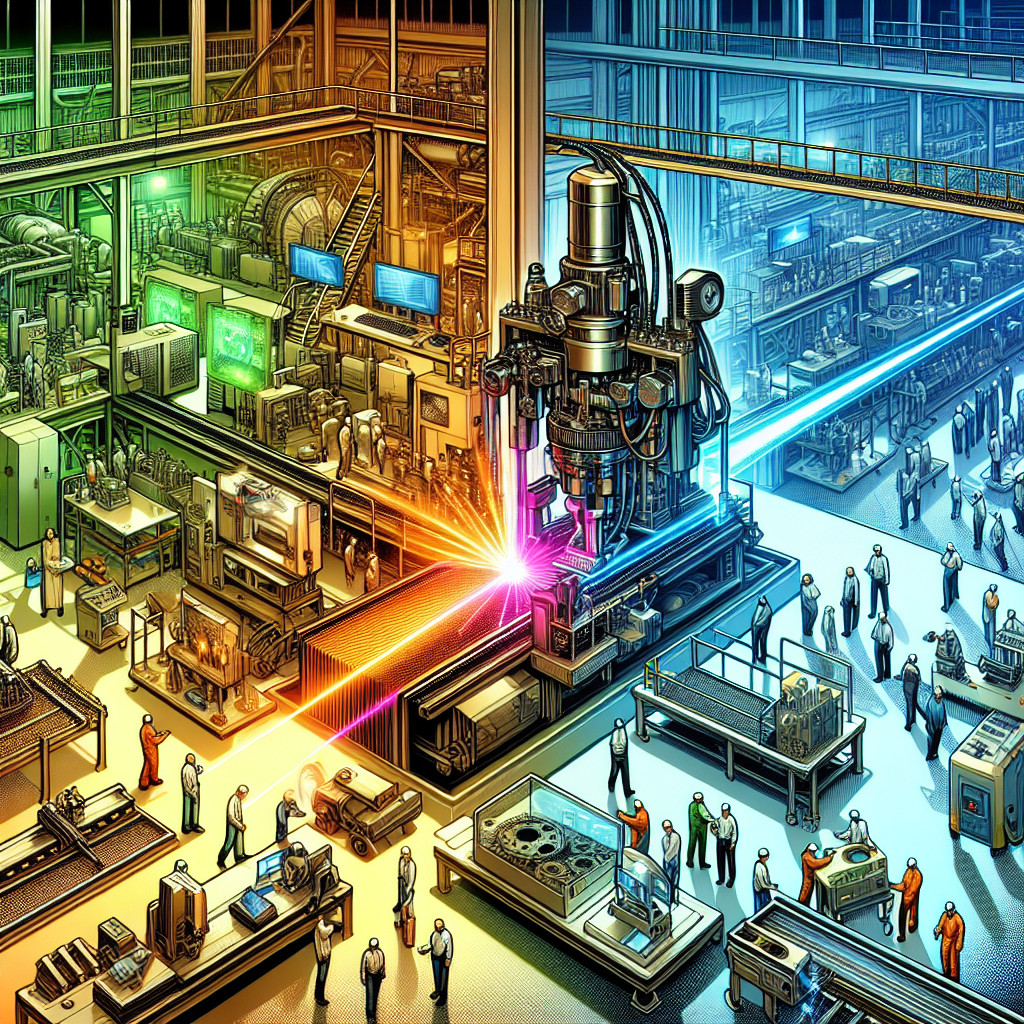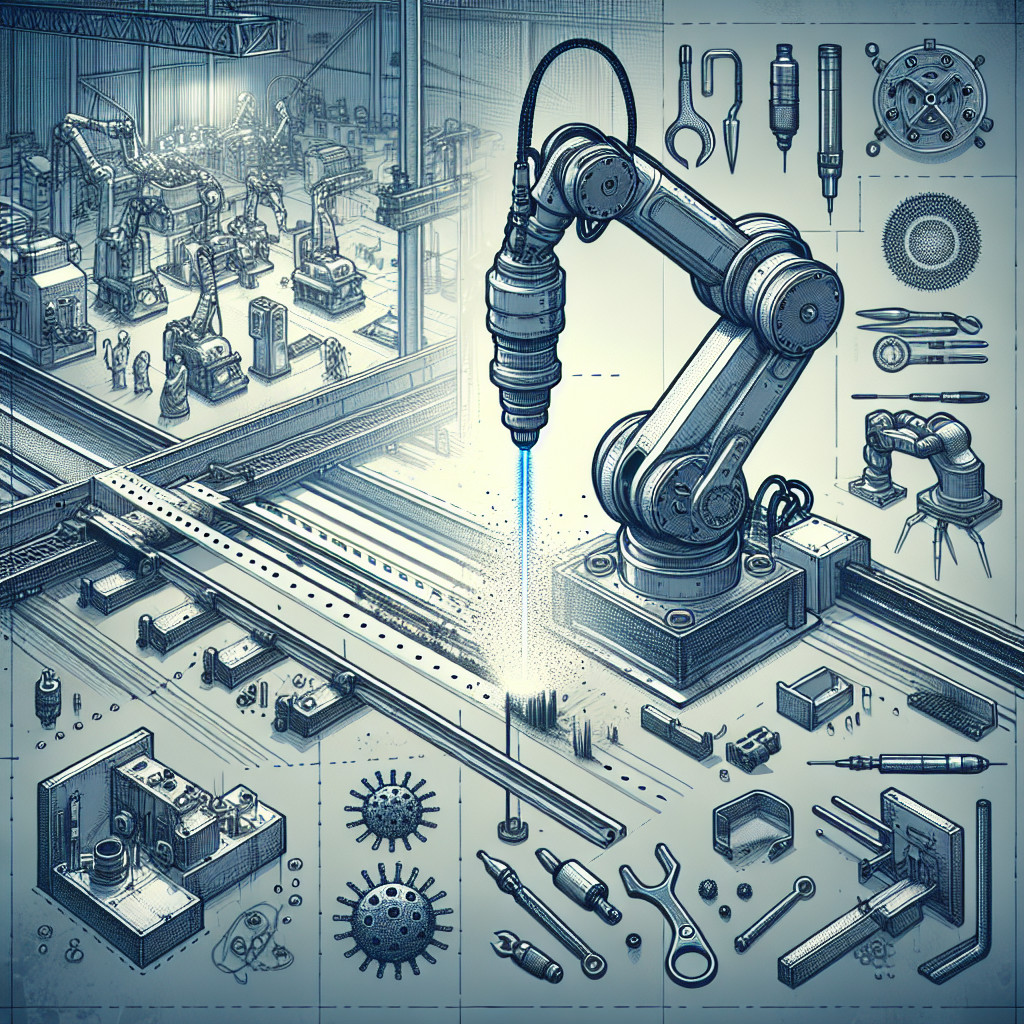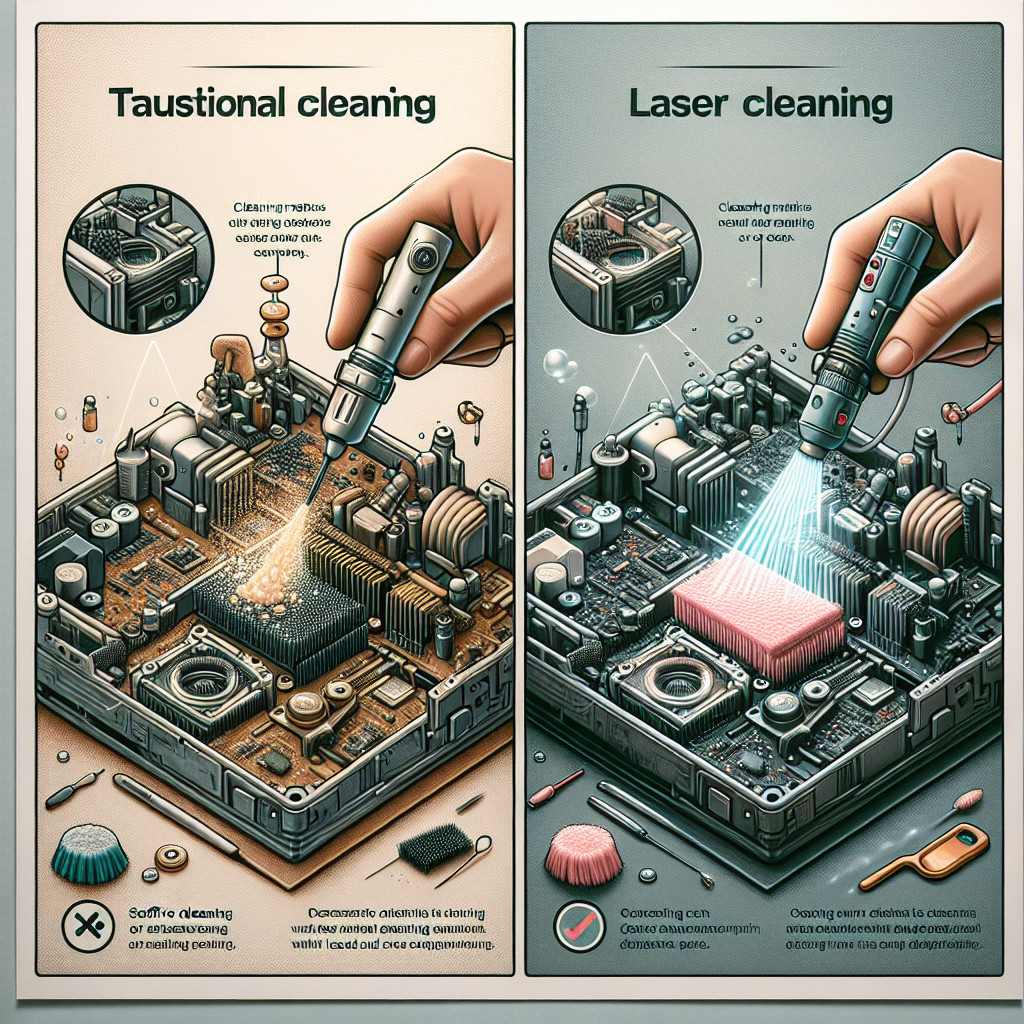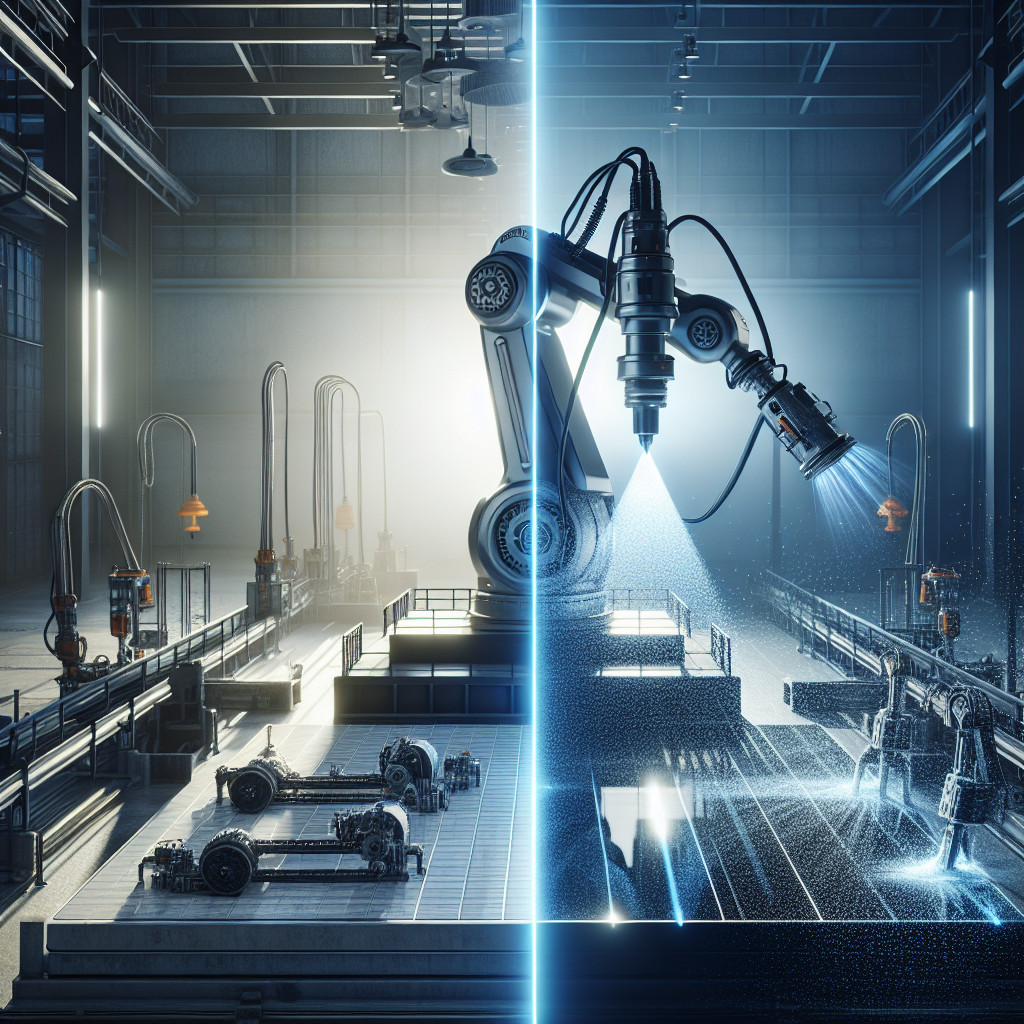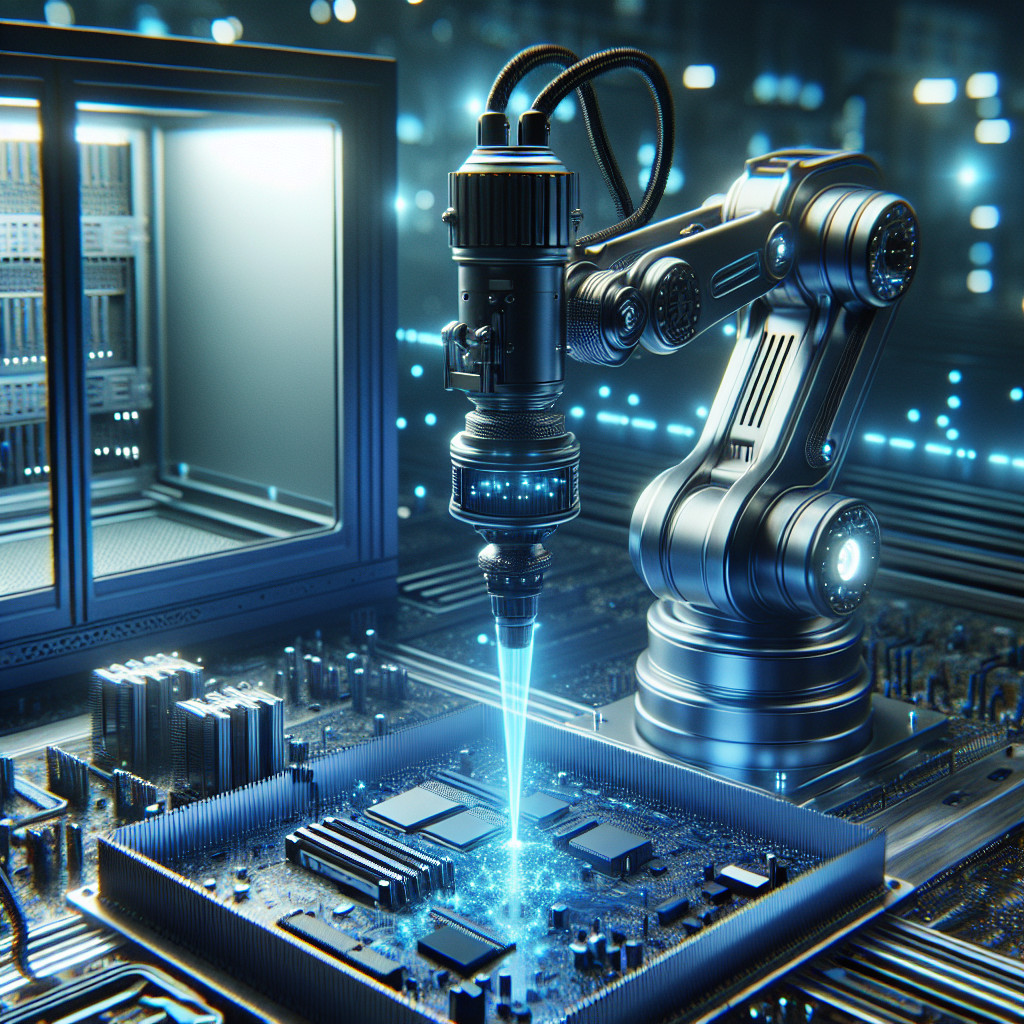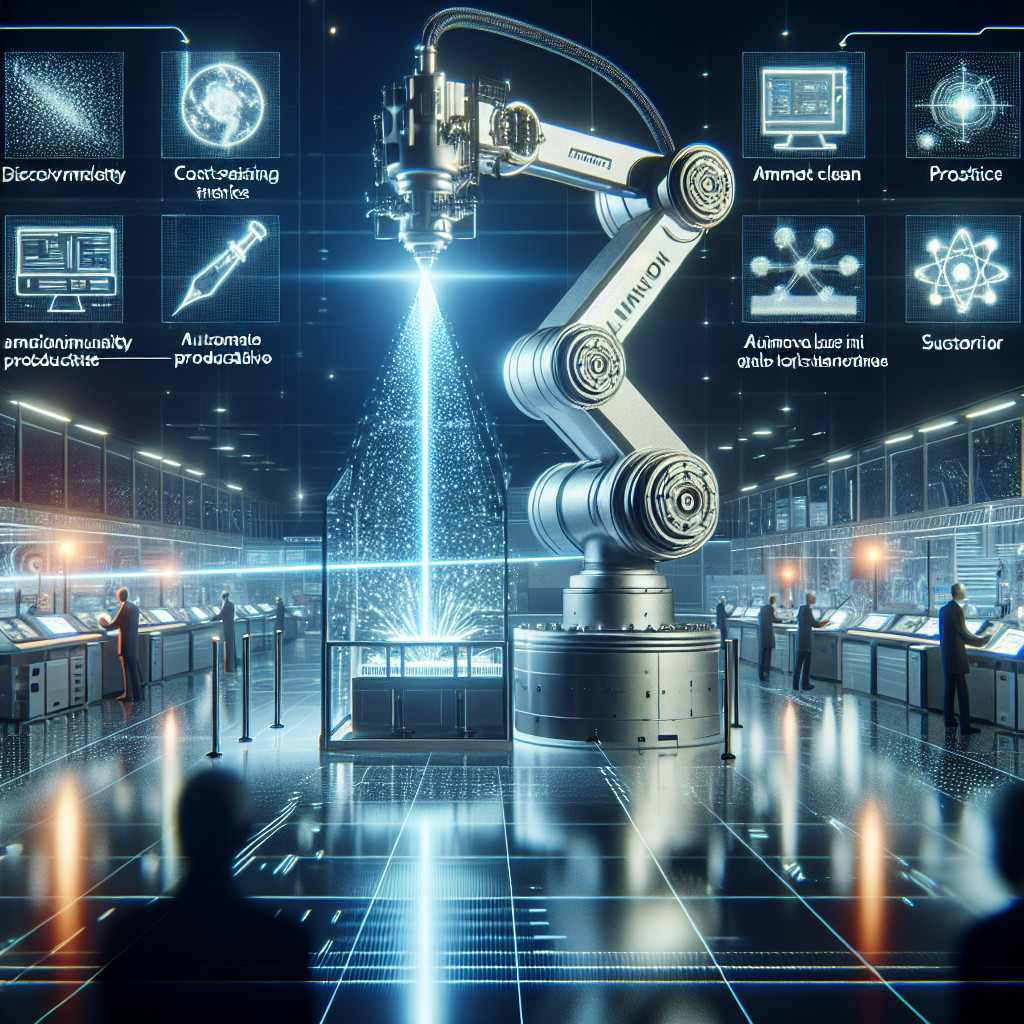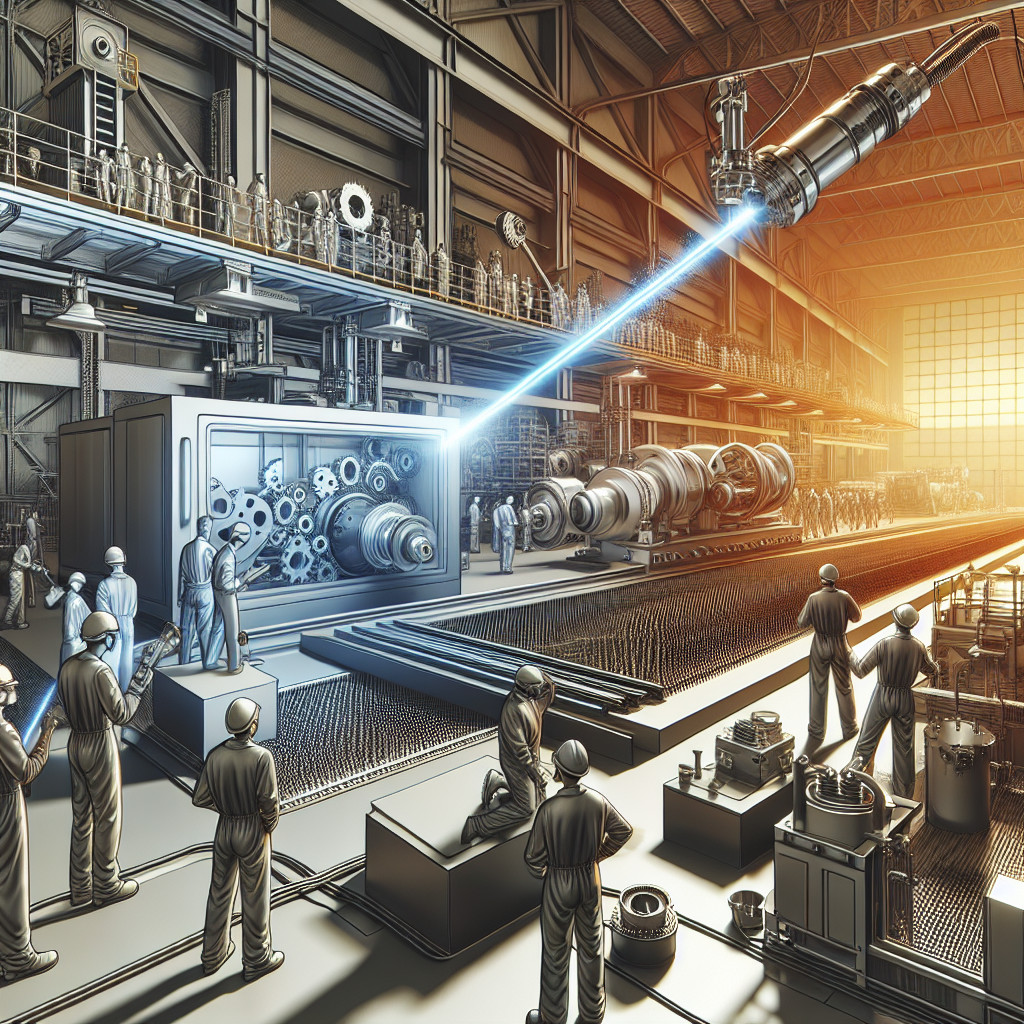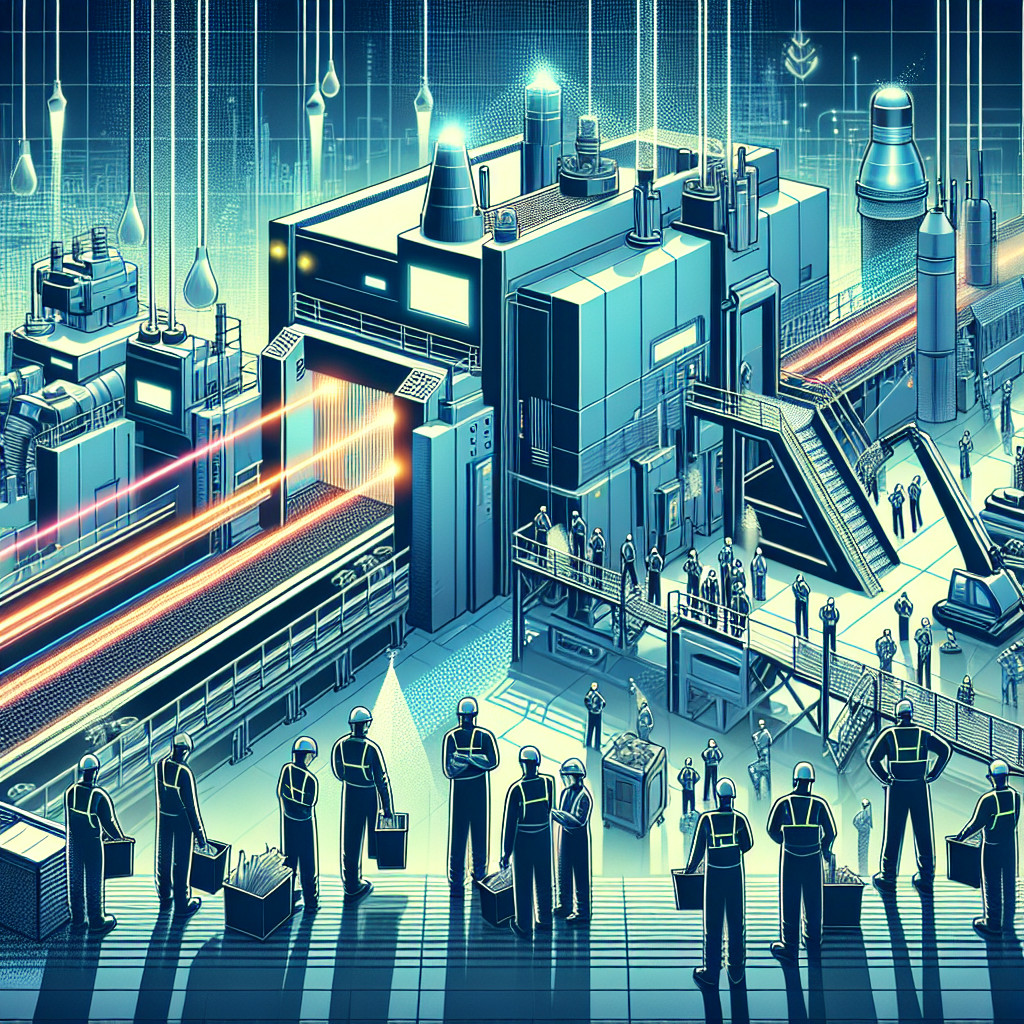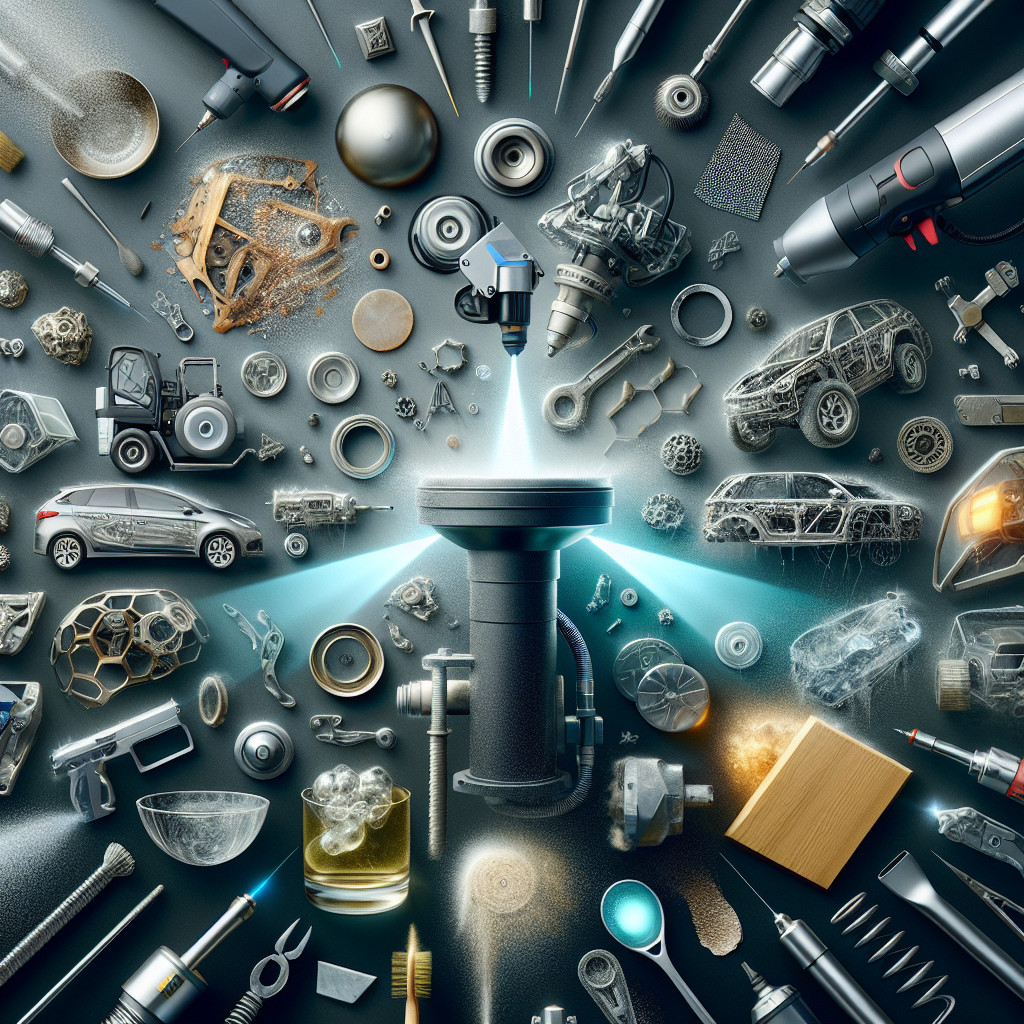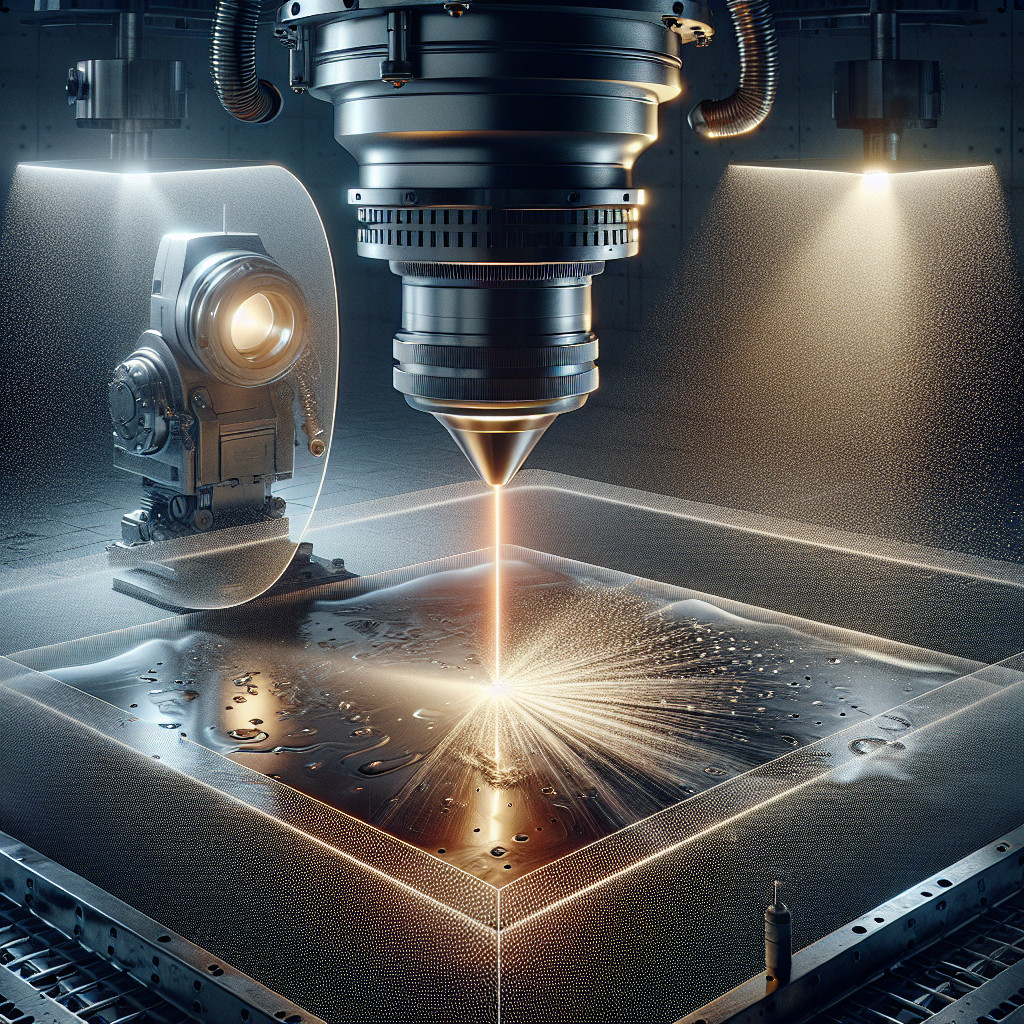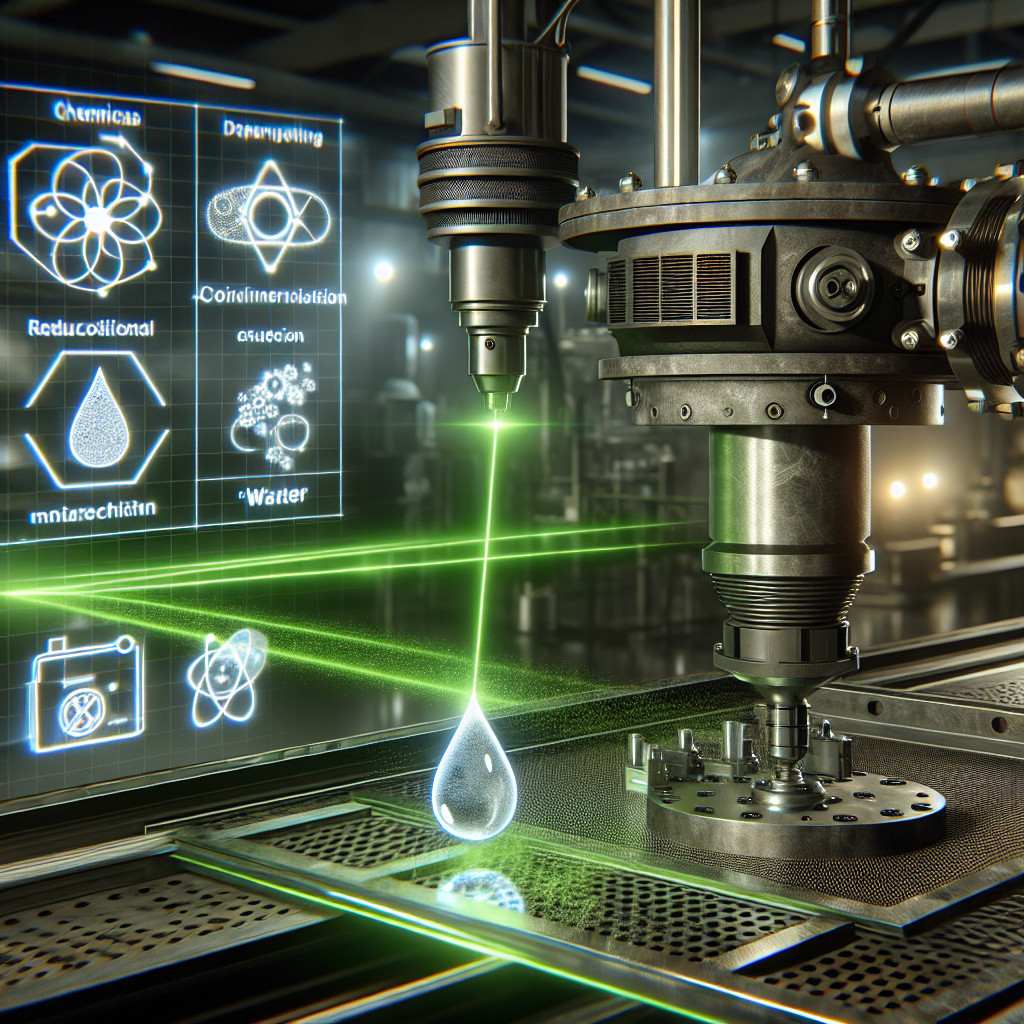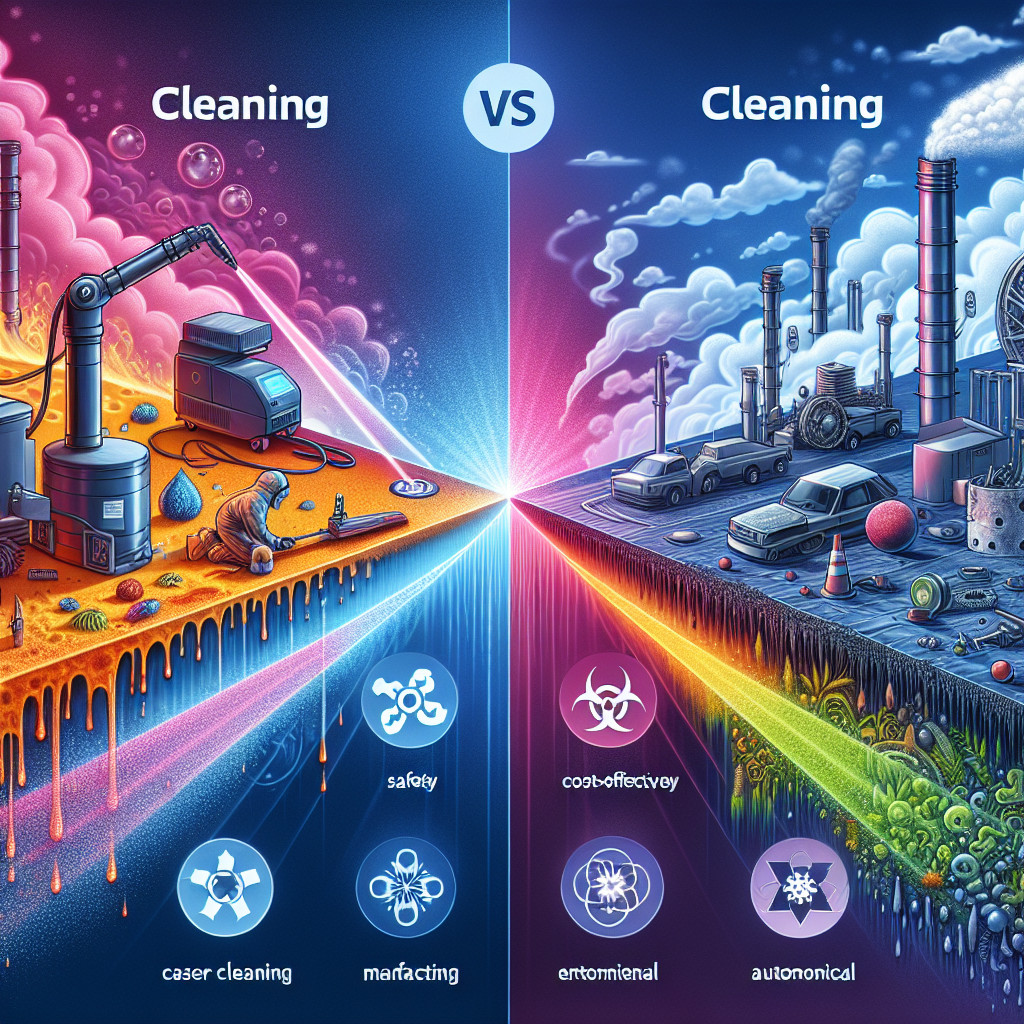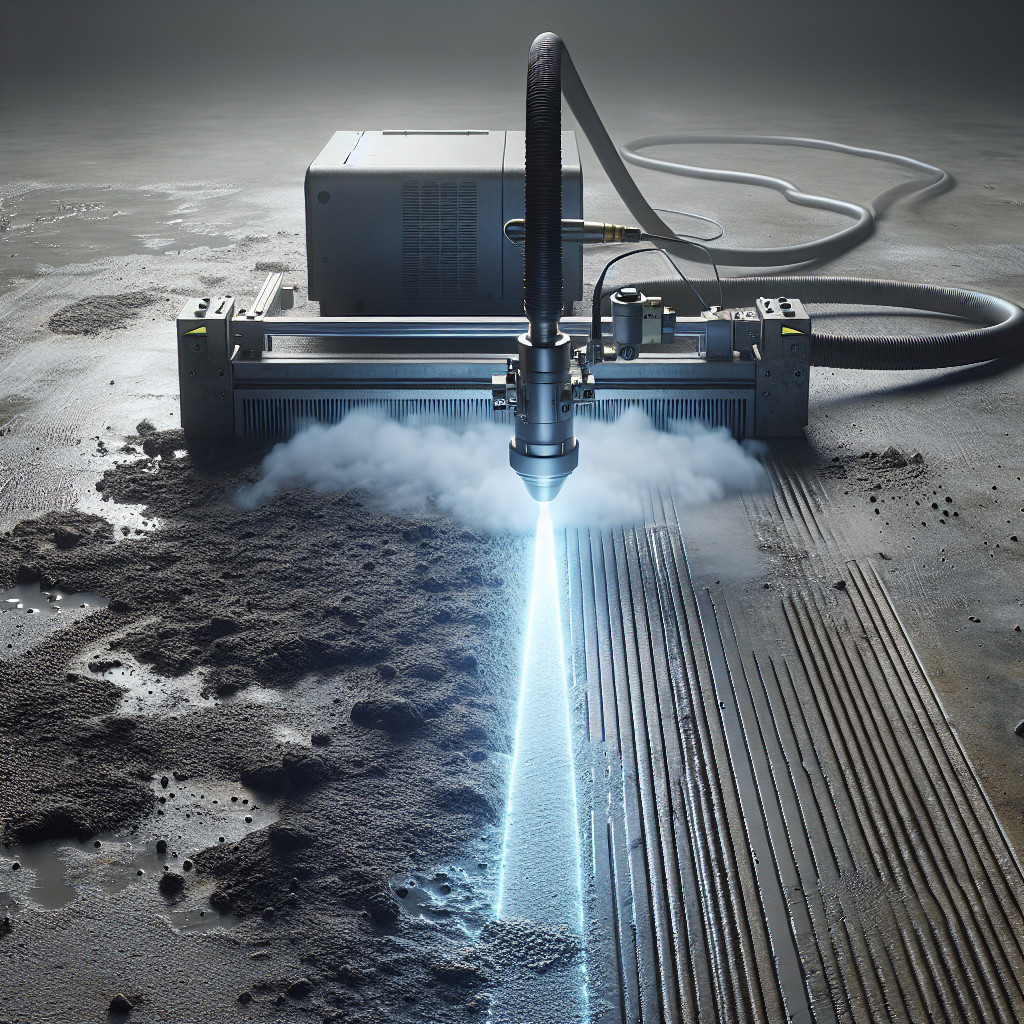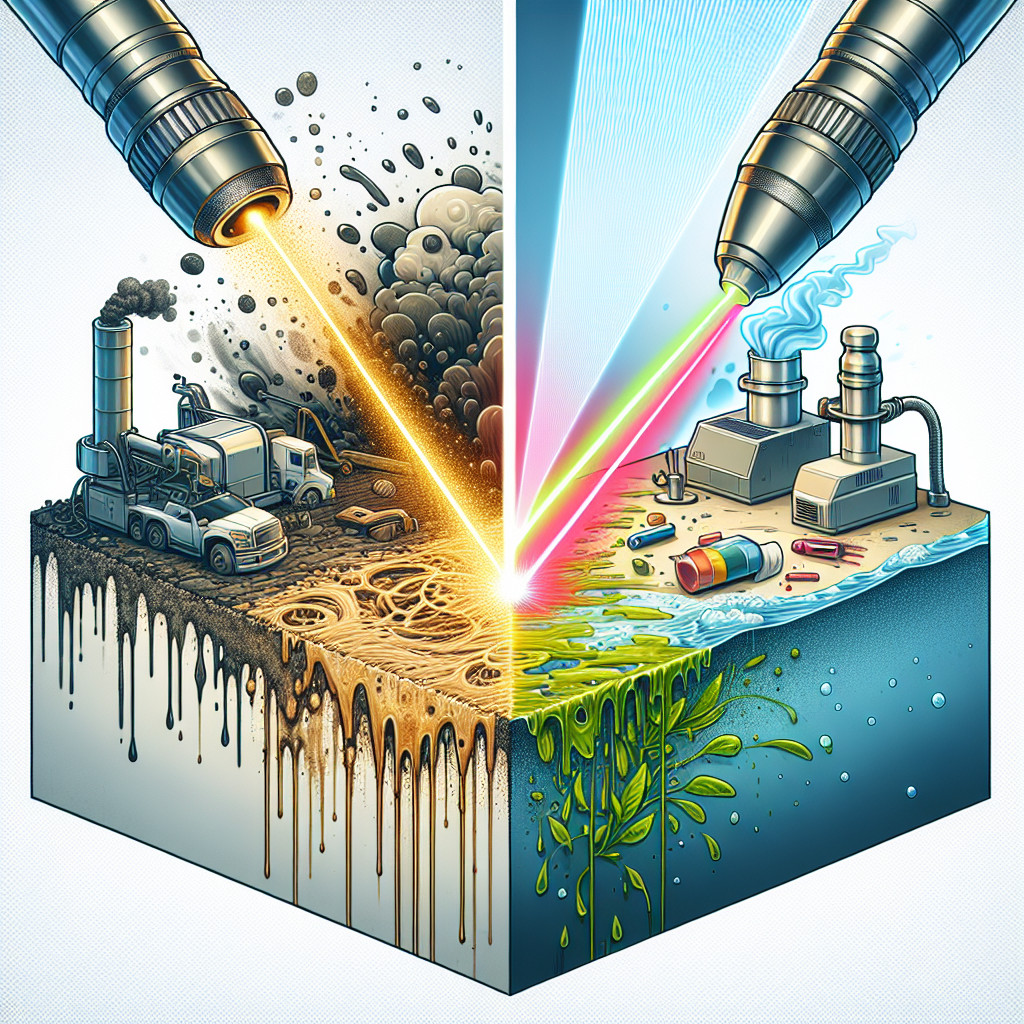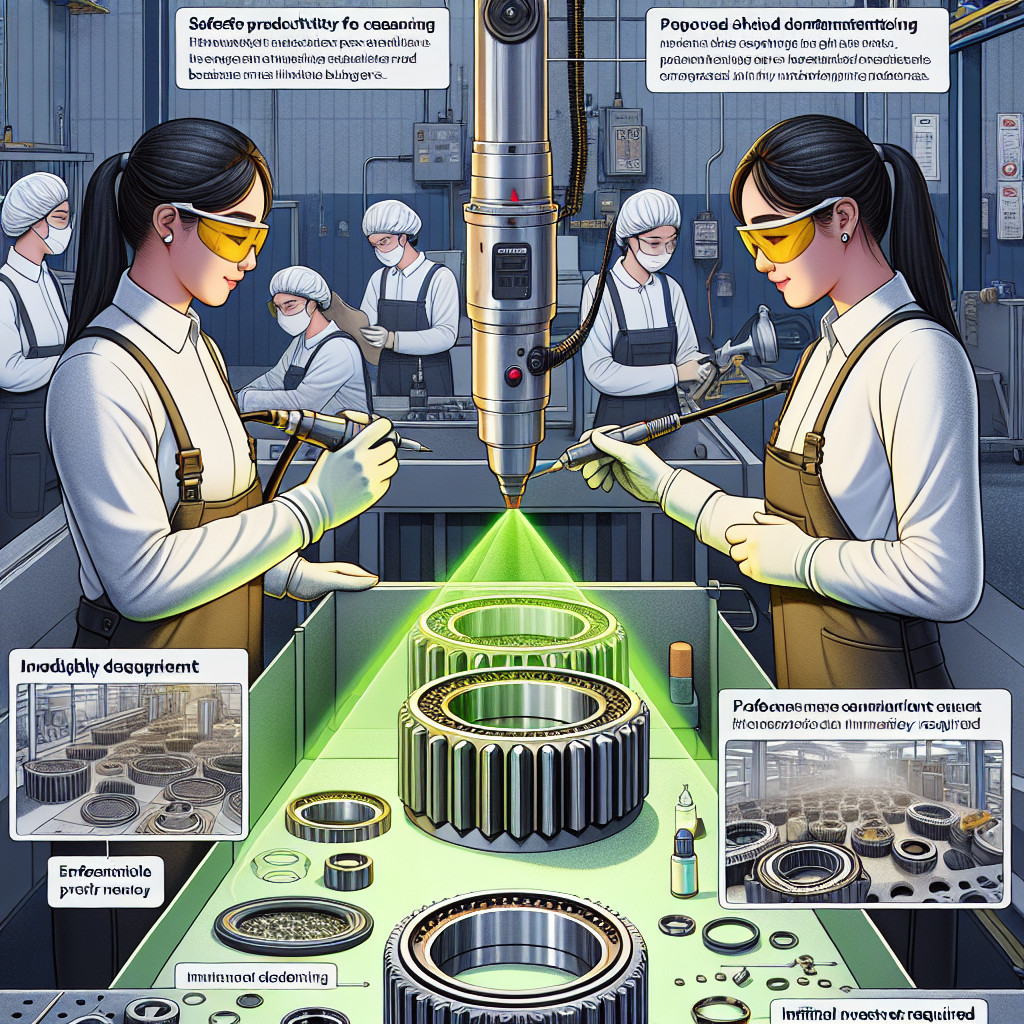
- Applications of laser cleaning in ceramic tile production
- Impact of laser cleaning on the quality of ceramic products
- Impact of laser cleaning on production efficiency in the ceramic industry
- Effectiveness of laser cleaning in removing stains and discoloration from ceramic surfaces
- Role of laser cleaning in improving the durability and longevity of ceramic products
- Comparison of laser cleaning with chemical cleaning methods for ceramics
- Latest advancements in laser cleaning technology for ceramic industry
Applications of laser cleaning in ceramic tile production
Laser cleaning is a non-contact, non-abrasive cleaning method that uses high-intensity laser beams to remove contaminants from surfaces. In the ceramic tile production process, laser cleaning can be used for various applications:
1. **Surface preparation**: Before applying glazes or coatings, ceramic tiles need to have a clean and smooth surface. Laser cleaning can effectively remove dirt, oil, and other contaminants from the surface, ensuring better adhesion of the coatings.
2. **Glaze removal**: In some cases, glazes or coatings on ceramic tiles may need to be removed for rework or customization. Laser cleaning can selectively remove the glaze without damaging the underlying tile, providing a precise and efficient solution.
3. **Grout cleaning**: Laser cleaning can also be used to clean grout lines between tiles, removing dirt, mold, and stains without the need for harsh chemicals or manual scrubbing. This results in a cleaner and more hygienic surface.
4. **Quality control**: Laser cleaning can be used for quality control purposes, inspecting the surface of ceramic tiles for defects or contaminants. Any imperfections can be quickly identified and removed using laser cleaning, ensuring only high-quality tiles are shipped to customers.
Overall, laser cleaning offers several advantages in ceramic tile production:
– **Efficiency**: Laser cleaning is a fast and precise cleaning method, reducing production time and labor costs.
– **Environmentally friendly**: Laser cleaning does not require the use of chemicals or abrasive materials, making it a more sustainable cleaning solution.
– **Versatility**: Laser cleaning can be used for a wide range of applications in ceramic tile production, from surface preparation to quality control.
In conclusion, laser cleaning is a valuable technology that can significantly improve the efficiency and quality of ceramic tile production. By incorporating laser cleaning into their processes, manufacturers can achieve cleaner, more consistent results while reducing their environmental impact.
#laser #cleaning #ceramic #tile #production
#efficiency #environmentallyfriendly #qualitycontrol #surfacepreparation #glazeremoval #groutcleaning #innovation #technology #sustainability #manufacturing #qualityassurance.
Impact of laser cleaning on the quality of ceramic products
The can be seen in several aspects:
1. Improved surface cleanliness: Laser cleaning can effectively remove contaminants from the surface of ceramic products, ensuring a clean and pristine finish.
2. Enhanced adhesion: By removing surface contaminants, laser cleaning can improve the adhesion of coatings and adhesives on ceramic products, leading to better performance and durability.
3. Reduced defects: Surface contaminants can lead to defects such as cracks, pits, and delamination in ceramic products. Laser cleaning can help prevent these defects and improve the overall quality of the products.
4. Increased productivity: Laser cleaning is a fast and efficient process that can significantly reduce cleaning time and labor costs, leading to increased productivity and cost savings.
5. Environmental benefits: Unlike traditional cleaning methods that use harsh chemicals or produce waste, laser cleaning is a clean and environmentally friendly process that does not generate any harmful by-products.
Overall, the is significant, leading to improved surface cleanliness, enhanced adhesion, reduced defects, increased productivity, and environmental benefits.
#laser cleaning #ceramic products #surface contaminants #quality finish #environmentally friendly
frazy kluczowe:
– Impact of laser cleaning on ceramic product quality
– Benefits of laser cleaning for ceramic products
– Laser cleaning for improved ceramic product performance
– Environmental advantages of laser cleaning in ceramics
– Efficiency of laser cleaning in ceramic product manufacturing
Impact of laser cleaning on production efficiency in the ceramic industry
🔹 Increased productivity: By eliminating the need for manual cleaning methods such as sandblasting or chemical treatments, laser cleaning significantly reduces the time and labor required to clean ceramic surfaces. This increase in productivity allows for faster turnaround times and higher production output.
🔹 Cost savings: While the initial investment in laser cleaning equipment may be higher than traditional cleaning methods, the long-term cost savings are substantial. With reduced labor costs, lower maintenance requirements, and decreased waste generation, laser cleaning proves to be a cost-effective solution for ceramic manufacturers.
🔹 Environmental benefits: Laser cleaning is a non-contact and chemical-free process, making it an environmentally friendly alternative to traditional cleaning methods. By eliminating the use of harmful chemicals and reducing waste generation, laser cleaning helps ceramic manufacturers reduce their environmental footprint and comply with strict regulations.
Overall, the is undeniable. With improved cleaning precision, increased productivity, cost savings, and environmental benefits, laser cleaning has become a game-changer for ceramic manufacturers looking to streamline their production processes and enhance the quality of their products.
#laser cleaning #production efficiency #ceramic industry #environmental benefits #cost savings #improved cleaning precision
frazy kluczowe:
– Laser cleaning technology in ceramic industry
– Benefits of laser cleaning for ceramic manufacturers
– Efficiency of laser cleaning in ceramic production
– Environmental impact of laser cleaning in ceramics
– Cost-effective cleaning solutions for ceramic industry
Effectiveness of laser cleaning in removing stains and discoloration from ceramic surfaces
Studies have shown that laser cleaning is highly effective in removing a wide range of stains and discoloration from ceramic surfaces, including grease, grime, mineral deposits, and even graffiti. The precision of the laser beam allows for targeted cleaning without damaging the underlying ceramic material, making it ideal for delicate or intricate surfaces.
One of the key advantages of laser cleaning is its ability to remove stubborn stains and discoloration that may be resistant to traditional cleaning methods. The high-energy laser beam can penetrate deep into the pores of the ceramic material, effectively removing embedded contaminants that may be difficult to reach with other cleaning techniques.
In addition to its effectiveness in removing stains and discoloration, laser cleaning also offers other benefits such as reduced cleaning time, minimal waste generation, and improved surface finish. The precision of the laser beam allows for quick and efficient cleaning, reducing the need for manual scrubbing or abrasive cleaning agents.
Overall, laser cleaning is a highly effective and versatile technology for removing stains and discoloration from ceramic surfaces. Its precision, efficiency, and environmental friendliness make it a preferred choice for cleaning and restoring ceramic materials in various applications.
- High-energy laser beam
- Precision cleaning
- Environmentally friendly
- Efficient removal of stains and discoloration
- Reduced cleaning time
- Stains and discoloration removal
- Laser cleaning technology
- Non-abrasive cleaning
- Safe and effective cleaning method
- Surface restoration
#laser #cleaning #ceramic #stains #discoloration #precision #efficiency #environmentallyfriendly
Role of laser cleaning in improving the durability and longevity of ceramic products
One of the key benefits of laser cleaning is its ability to improve the durability and longevity of ceramic products. By removing dirt and contaminants from the surface, laser cleaning helps to prevent corrosion and degradation of the ceramic material. This can significantly extend the lifespan of ceramic products, saving time and money on replacement and maintenance costs.
Furthermore, laser cleaning is a environmentally friendly cleaning method, as it does not require the use of harsh chemicals or solvents. This makes it a safe and sustainable option for cleaning ceramic products, reducing the impact on the environment and the health of workers.
Table: Comparison of traditional cleaning methods and laser cleaning
| Cleaning Method | Pros | Cons |
|---|---|---|
| Scrubbing | Effective for light dirt and stains | Abrasive and can damage the surface |
| Chemical Cleaning | Strong cleaning power | Harsh chemicals can be harmful to health and the environment |
| Laser Cleaning | Non-contact and non-abrasive | High initial cost |
In conclusion, laser cleaning plays a crucial role in improving the durability and longevity of ceramic products. By providing a non-contact and non-abrasive cleaning solution, laser cleaning helps to remove dirt and contaminants from ceramic surfaces without causing any damage. This not only restores the original appearance of ceramic products, but also extends their lifespan and reduces maintenance costs. With its environmentally friendly and sustainable cleaning method, laser cleaning is a valuable tool for maintaining the quality and performance of ceramic products.
#laser cleaning, ceramic products, durability, longevity, non-abrasive cleaning, environmentally friendly, sustainability
long-tail phrases: laser cleaning for ceramic products, non-contact cleaning method, sustainable cleaning solution for ceramics, improving durability of ceramics with laser cleaning, benefits of laser cleaning for ceramic products.
Comparison of laser cleaning with chemical cleaning methods for ceramics
Laser Cleaning
Laser cleaning is a non-contact cleaning method that uses high-energy laser beams to remove contaminants from the surface of ceramics. The laser beam is directed at the contaminated area, causing the contaminants to vaporize and be removed from the surface. Laser cleaning is highly effective in removing stubborn contaminants such as grease, oil, and rust without damaging the ceramic surface.
Chemical Cleaning
Chemical cleaning, on the other hand, involves the use of cleaning agents such as solvents, acids, and alkalis to dissolve and remove contaminants from the surface of ceramics. Chemical cleaning is effective in removing a wide range of contaminants but can be harsh on the ceramic surface and may require additional steps to neutralize the cleaning agents.
Comparison
When comparing laser cleaning with chemical cleaning methods for ceramics, several factors need to be considered. Laser cleaning is a more environmentally friendly option as it does not require the use of harsh chemicals that can be harmful to the environment. Additionally, laser cleaning is a more precise method that can target specific areas of contamination without affecting the surrounding surface.
On the other hand, chemical cleaning methods are generally more cost-effective and can be used on a wider range of contaminants. Chemical cleaning can also be more versatile as different cleaning agents can be used depending on the type of contaminants present on the ceramic surface.
Conclusion
In conclusion, both laser cleaning and chemical cleaning methods have their advantages and disadvantages when it comes to cleaning ceramics. Laser cleaning is a more environmentally friendly and precise method, while chemical cleaning is more cost-effective and versatile. The choice of cleaning method will depend on the specific requirements of the cleaning task and the type of contaminants present on the ceramic surface.
- laser cleaning
- chemical cleaning
- ceramics
- contaminants
- environmentally friendly
- cost-effective
- Comparison of laser cleaning with chemical cleaning methods for ceramics
- Laser cleaning is a non-contact cleaning method
- Chemical cleaning involves the use of cleaning agents
- Factors to consider when comparing laser cleaning with chemical cleaning methods
- Conclusion on the comparison of laser cleaning with chemical cleaning methods
#cleaning #ceramics #laser #chemical #environment #contaminants #cost-effective
Latest advancements in laser cleaning technology for ceramic industry
1. Improved precision and control: One of the key advancements in laser cleaning technology is the improved precision and control it offers. With the ability to adjust the intensity and focus of the laser beam, operators can target specific areas on ceramic surfaces with greater accuracy, ensuring a thorough and consistent clean.
2. Faster cleaning speeds: Another major advancement in laser cleaning technology is the increase in cleaning speeds. With advancements in laser technology, cleaning processes can now be completed in a fraction of the time compared to traditional methods. This not only improves efficiency but also reduces downtime and increases productivity.
3. Reduced environmental impact: Laser cleaning technology is a more environmentally friendly alternative to traditional cleaning methods. Unlike chemical cleaning agents, lasers do not produce harmful fumes or waste, making them a cleaner and safer option for the ceramic industry.
4. Versatility in application: Laser cleaning technology is highly versatile and can be used on a wide range of ceramic surfaces, including tiles, pottery, and glassware. This versatility makes it a valuable tool for various applications in the ceramic industry, from manufacturing to restoration.
5. Cost-effective solution: While the initial investment in laser cleaning technology may be higher than traditional cleaning methods, the long-term cost savings are significant. With reduced maintenance and cleaning costs, as well as increased efficiency and productivity, laser cleaning technology offers a cost-effective solution for the ceramic industry.
Overall, the latest advancements in laser cleaning technology have revolutionized the way ceramic surfaces are cleaned and maintained. With improved precision, faster cleaning speeds, reduced environmental impact, versatility in application, and cost-effective solutions, laser cleaning technology is shaping the future of the ceramic industry.
#laser #cleaning #technology #ceramic #industry
frazy kluczowe:
– Advanced laser cleaning technology for ceramic surfaces
– Benefits of laser cleaning in the ceramic industry
– Laser cleaning solutions for ceramic manufacturing sector
- Laser cleaning and long-term cost savings – cost analysis - February 29, 2024
- Laser cleaning and reducing emissions of harmful substances - February 28, 2024
- Can laser cleaning be used in veterinary medicine? - February 28, 2024



